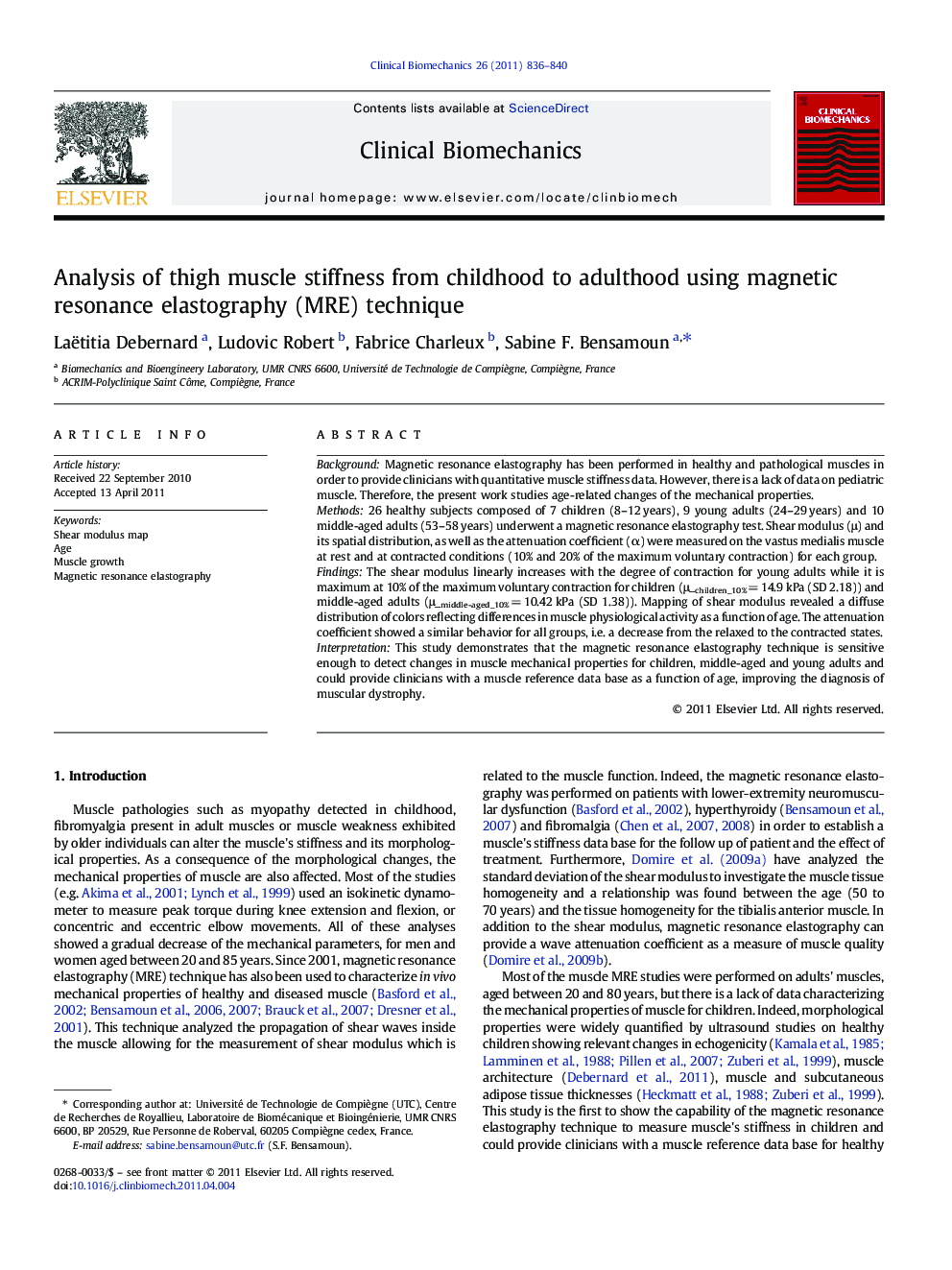| Article ID | Journal | Published Year | Pages | File Type |
|---|---|---|---|---|
| 6205240 | Clinical Biomechanics | 2011 | 5 Pages |
BackgroundMagnetic resonance elastography has been performed in healthy and pathological muscles in order to provide clinicians with quantitative muscle stiffness data. However, there is a lack of data on pediatric muscle. Therefore, the present work studies age-related changes of the mechanical properties.Methods26 healthy subjects composed of 7 children (8-12 years), 9 young adults (24-29 years) and 10 middle-aged adults (53-58 years) underwent a magnetic resonance elastography test. Shear modulus (μ) and its spatial distribution, as well as the attenuation coefficient (α) were measured on the vastus medialis muscle at rest and at contracted conditions (10% and 20% of the maximum voluntary contraction) for each group.FindingsThe shear modulus linearly increases with the degree of contraction for young adults while it is maximum at 10% of the maximum voluntary contraction for children (μ_children_10% = 14.9 kPa (SD 2.18)) and middle-aged adults (μ_middle-aged_10% = 10.42 kPa (SD 1.38)). Mapping of shear modulus revealed a diffuse distribution of colors reflecting differences in muscle physiological activity as a function of age. The attenuation coefficient showed a similar behavior for all groups, i.e. a decrease from the relaxed to the contracted states.InterpretationThis study demonstrates that the magnetic resonance elastography technique is sensitive enough to detect changes in muscle mechanical properties for children, middle-aged and young adults and could provide clinicians with a muscle reference data base as a function of age, improving the diagnosis of muscular dystrophy.
